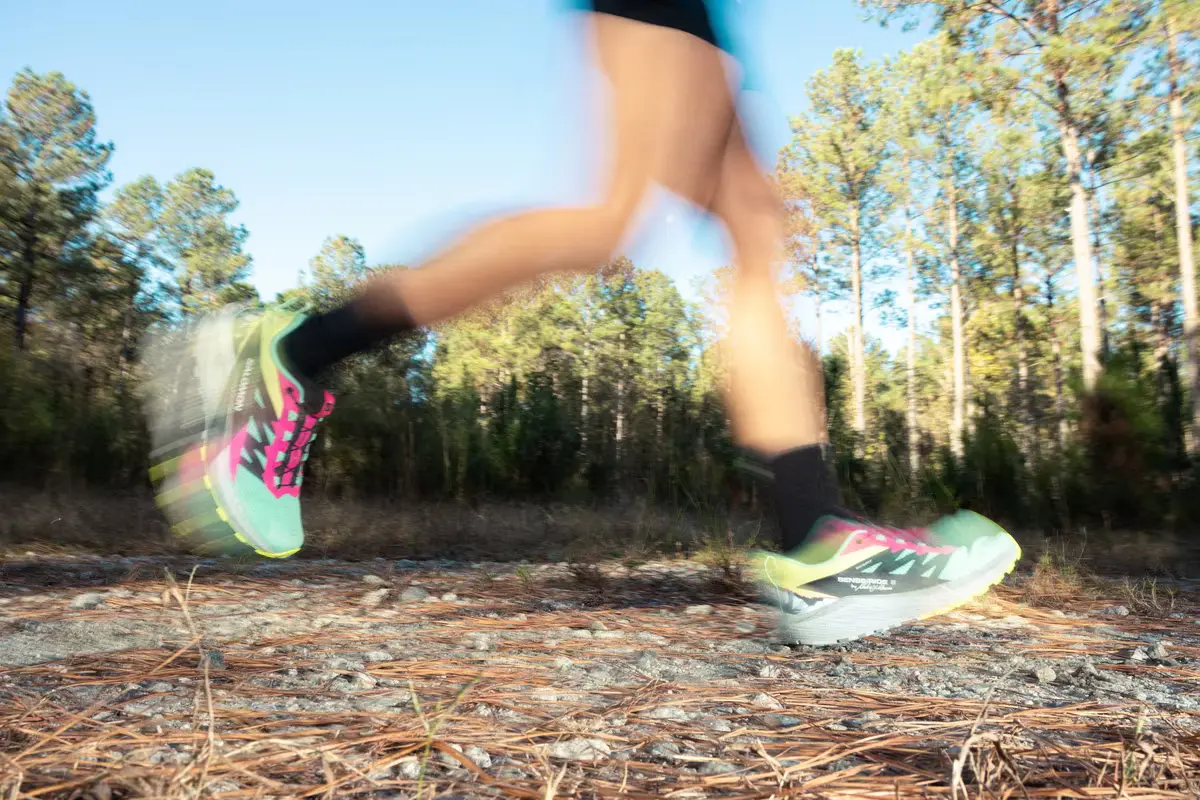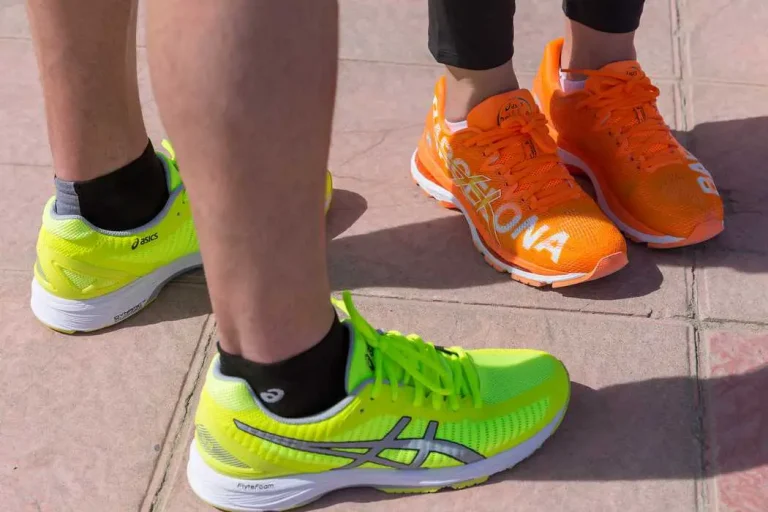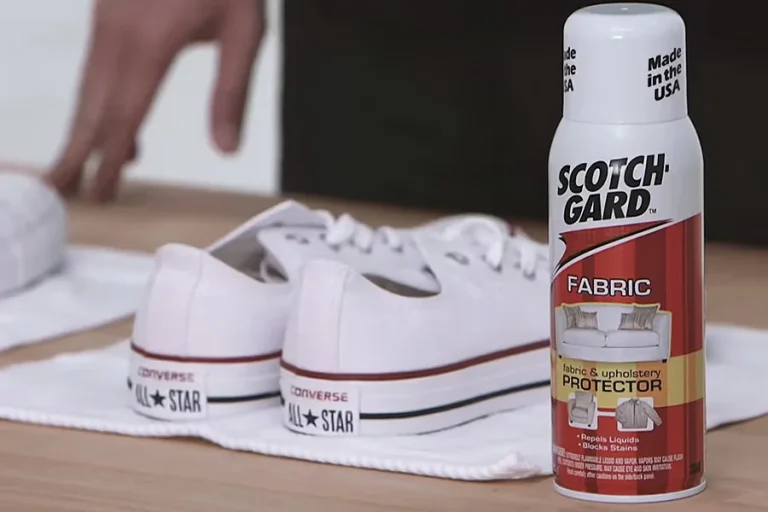How Should Trail Running Shoes Fit? For Best Comfort
Having the right fit in trail running shoes is crucial for a comfortable and successful running experience on rugged terrains. Ill-fitting shoes can lead to discomfort, blisters, and even injuries.
This article will guide you on how trail running shoes should fit to optimize your performance and protect your feet.
Properly fitting trail running shoes offer numerous benefits, including enhanced stability, improved traction, and reduced risk of foot-related issues.
To achieve the ideal fit, it’s important to understand foot anatomy, measure your feet accurately, and consider factors like toe box fit, heel fit, and midfoot support.
By following the guidelines in this article, you’ll be able to choose the right size, evaluate different fit aspects, and troubleshoot common fit issues.
Whether you’re a seasoned trail runner or just starting out, finding the perfect fit will ensure a comfortable and enjoyable experience on the trails.
How should trail running shoes fit? Top tips
Finding the right fit for your trail running shoes is essential for a comfortable and successful running experience.
Here are some top tips to help you achieve the perfect fit:
Size Matters
Choose the correct shoe size by measuring your feet accurately. Consider sizing up slightly if you have wider feet or prefer a roomier fit.
Toe Box Space
Ensure there is enough room in the toe box for your toes to wiggle comfortably. Avoid tightness or crowding, as this can lead to blisters and discomfort.
Heel Fit
Check that your heel is snugly held in place without slipping. A secure heel fit provides stability and prevents blisters.
Arch Support
Look for shoes that offer adequate support for your arches. This helps with shock absorption and reduces the risk of foot fatigue.
Test on Different Terrains
Try out your shoes on various surfaces to ensure they provide the right amount of traction and stability for your trail running adventures.
Address Fit Issues
If you experience blisters, hot spots, or pressure points, consider adjusting lacing techniques or trying different socks to alleviate discomfort.
Regular Maintenance
Take care of your shoes by cleaning them regularly and replacing worn-out insoles or outsoles. This helps maintain their fit and extends their lifespan.
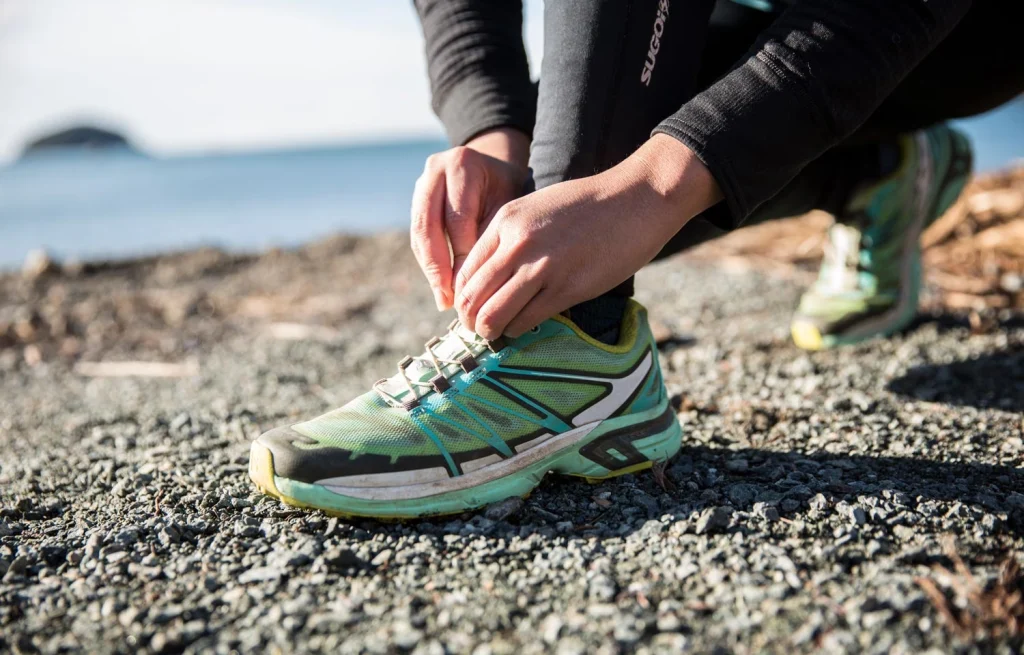
Related To: How Many Miles Are Walking Shoes Good For
Related To: Best Running Shoes For Ankle Support: 10 Genuine Picks
How Does It Lace? Best Tips
Proper lacing techniques can make a significant difference in the fit and performance of your trail running shoes. Here are some easy tips to help you lace them effectively:
Start with a Secure Base
Begin by lacing the shoes through the bottom eyelets, ensuring they are snug but not overly tight. This creates a secure base for the rest of the lacing.
Skip the Top Eyelet
For a more comfortable fit, consider skipping the top eyelet when lacing your trail running shoes. This allows for a bit more flexibility and reduces pressure on the front of your ankle.
Lock the Heel
To prevent heel slippage, use the “heel lock” technique. After lacing through the top eyelets, cross the laces over each other and thread them through the opposite side’s loop. Pull them tight to create a secure lock around the ankle.
Adjust for Comfort
If you experience pressure points or discomfort in specific areas, try different lacing patterns to alleviate the problem. For example, the “window lacing” technique can provide relief for a high instep or a pressure point on the top of the foot.
Customize for Foot Shape
If you have wide feet or narrow heels, you can experiment with different lacing techniques to achieve a more personalized fit. For instance, the “parallel lacing” method can accommodate wider feet, while the “runner’s loop” can help secure narrow heels.
Test and Fine-Tune
After lacing your shoes, walk or jog around to assess the fit. If you notice any discomfort or slippage, make adjustments by loosening or tightening specific sections of the laces until you find the optimal fit.
Remember, lacing techniques can vary depending on individual preferences and foot shape.
Don’t be afraid to experiment and find the lacing style that works best for you. With the right lacing, you can enhance the comfort, support, and overall performance of your trail running shoes.
Trying on and Testing Trail Running Shoes
When it comes to trail running shoes, trying them on and testing them properly is crucial to ensure the right fit and performance. Here are some top tips to help you in this process:
Wear the Right Socks
When trying on trail running shoes, wear the socks you would typically use for running. This ensures a more accurate fit and prevents surprises later on.
Size Up
Consider sizing up slightly, especially if you plan to wear thicker socks or if your feet tend to swell during runs. It’s better to have a little extra room than shoes that feel too tight.
Wiggle Room
Check that there is enough space in the toe box for your toes to move comfortably. You don’t want them cramped or rubbing against the front of the shoe, as this can lead to discomfort and blisters.
Walk and Run
Take a few steps and even jog around the store or designated area to get a feel for the shoes. Pay attention to any discomfort, rubbing, or slipping.
This will help you assess the shoes’ performance and fit while in motion.
Test on Different Surfaces
If possible, try the shoes on different surfaces similar to the trails you’ll be running on. This allows you to evaluate their traction and stability on various terrains.
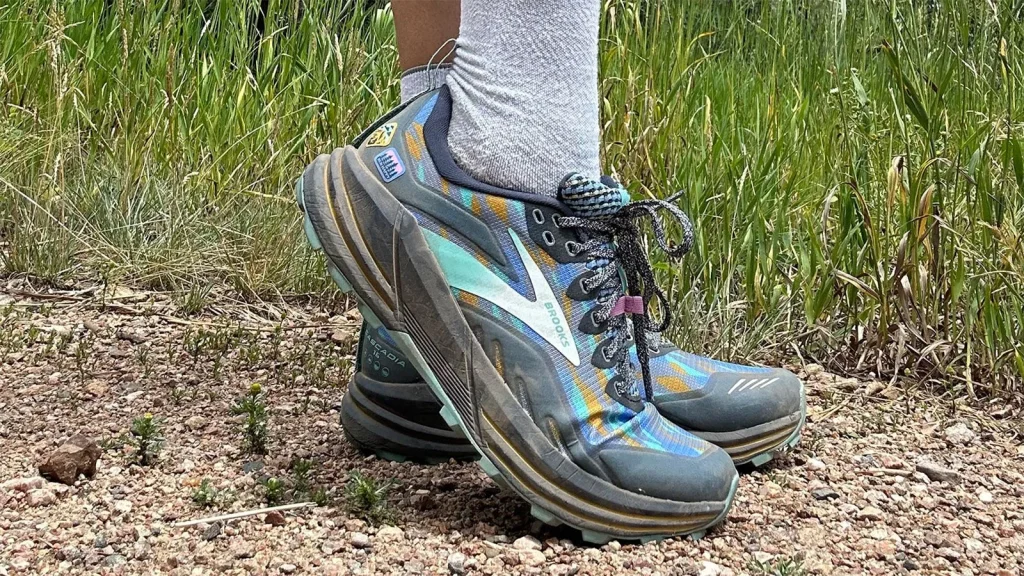
Remember, finding the right trail running shoes may take some trial and error. Prioritize comfort, support, and a secure fit to ensure an enjoyable and injury-free running experience on the trails.
How To Size a Trail Running Shoe
To properly size a trail running shoe, there are a few key factors to consider. First, it’s important to measure your feet accurately.
Use a measuring tape or ruler to determine the length of your foot from heel to toe.
Next, take into account the width of your foot by measuring the widest part. Once you have these measurements, consult the sizing chart provided by the shoe manufacturer.
Keep in mind that different brands may have slight variations in sizing, so it’s always a good idea to try on the shoes before making a purchase.
When trying on trail running shoes, make sure there is enough room in the toe box for your toes to wiggle comfortably, but not too much space that your foot slides around.
Additionally, consider the type of terrain you’ll be running on and the level of cushioning and support you prefer. It’s recommended to try on shoes with the socks you plan to wear while running to ensure the best fit.
Overall, finding the right size for a trail running shoe involves accurate measurements, trying on different brands and models, and considering your specific running needs.
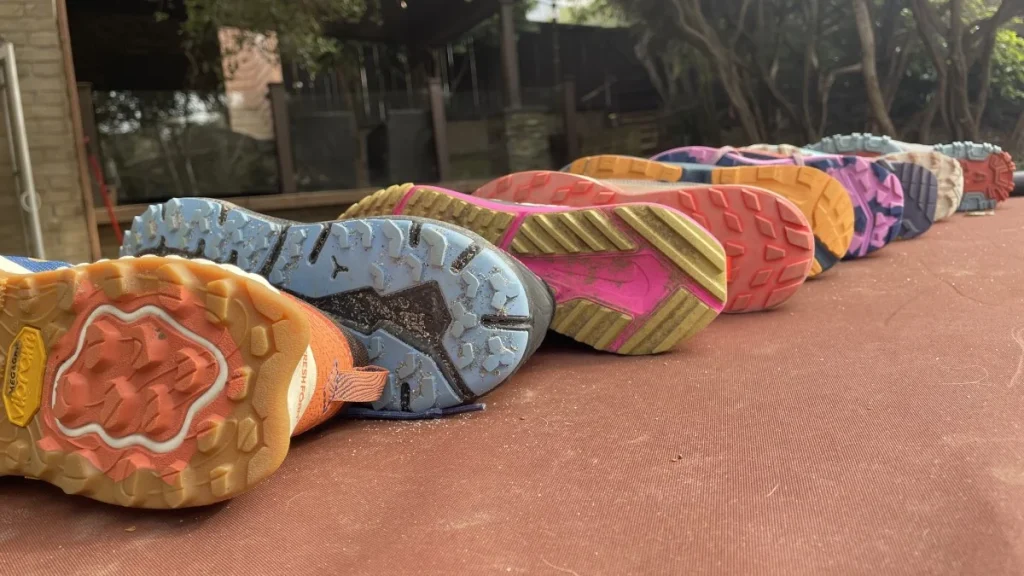
Running Shoe Length and Size Charts
The running shoes length size charts are following here:
Women’s Running Shoe Length Size Chart
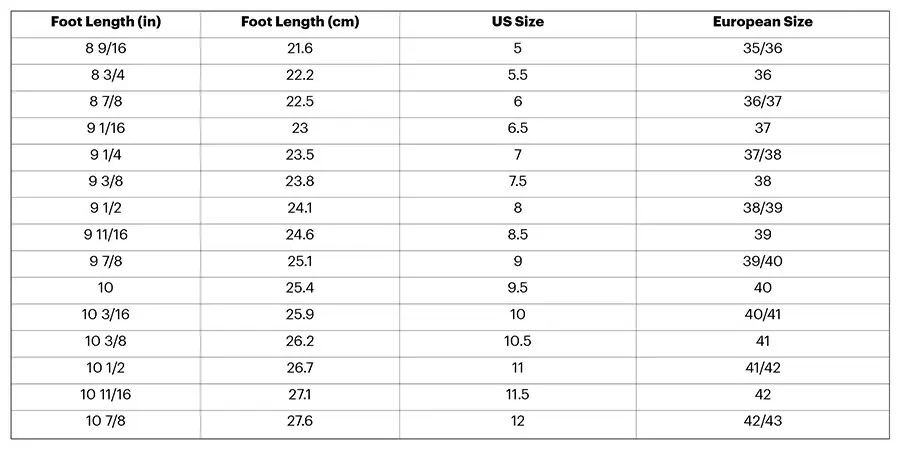
Men’s Running Shoe Length Size Chart
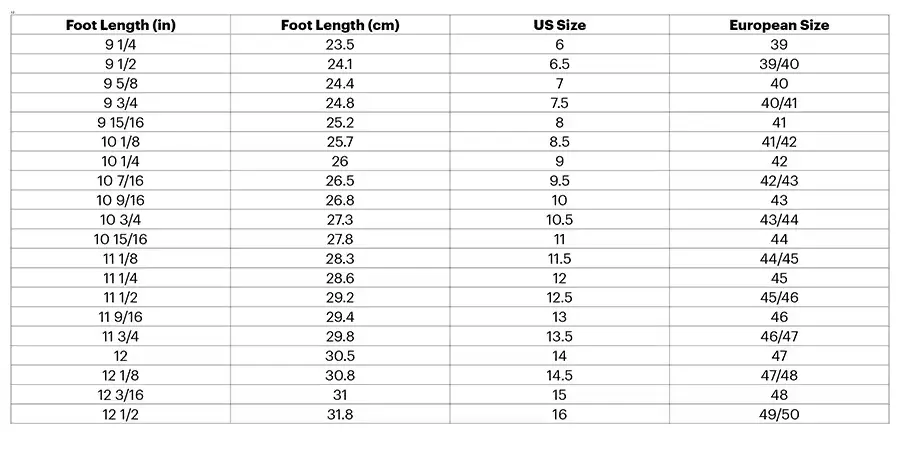
Conclusion
Achieving the right fit in trail running shoes is essential for a comfortable and successful running experience.
By following the guidelines outlined in this article, you can ensure that your shoes provide the necessary support, stability, and comfort on rugged terrains.
Remember to measure your feet accurately, consider factors like toe box fit and heel fit, and test the shoes on different surfaces.
Address any fit issues promptly and maintain your shoes properly to prolong their lifespan. Finding the perfect fit may require some trial and error, but it is well worth the effort.
Frequently Asked Question
A

